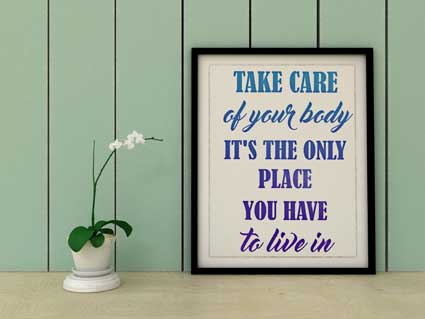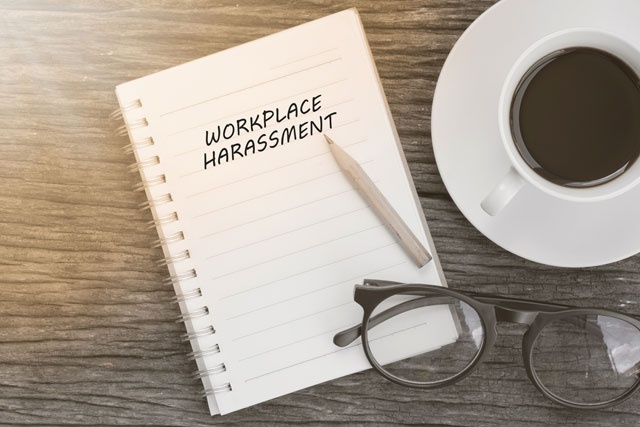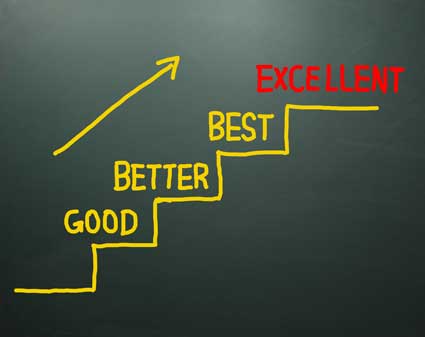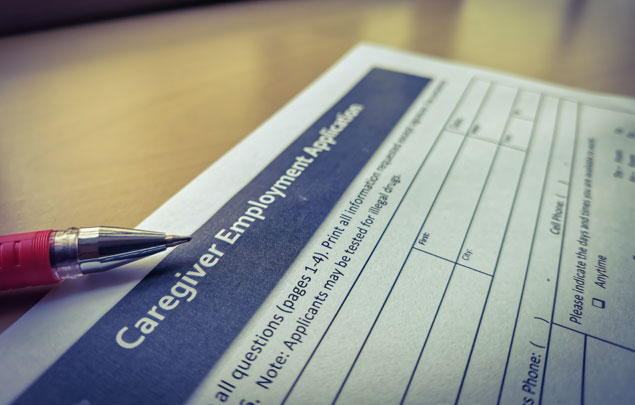Most of us have some blind spots when it comes to seeing ourselves as others do, whether it's good or bad. Some of us can be a little insecure, and we see ourselves negatively. Some people can't walk past a reflective surface without criticizing themselves: I'm so fat. I can't believe I wore these shoes. Look at all those wrinkles!
If you do not have a scale in your home, get one. You can get an inexpensive bathroom scale at a discount store, or if you want to spend the money, you can get the same kind doctors use, with the balancing weights. Keep your home scale somewhere convenient for you. Some people choose to keep theirs in the kitchen, others like the bathroom. Wherever you put it, the scale should have bare floor under it (not carpet) if at all possible. This will produce a truer reading. Also make sure the floor is level and not overly bumpy; you don't want to put it on top of a power cord or a threshold, for example.
When establishing your baseline weight, take off your shoes and strip down to minimal clothing or nothing at all.
If you haven't weighed yourself in a long time, you may not like what you see. In fact, you may be reading this right now and thinking that you are so afraid of the number on the scale that you don't even want to step on it. Try not to think of that number as the enemy. Try to think of it only as the baseline. The bottom. The pit, if you will. You have decided to take action and make positive change, and that number is only going to improve because of your commitment. So don't be afraid. If you realize you have 30 pounds to lose; that just means your number is going to go down a lot. If you have 100 pounds to lose, you will be able to be an inspirational story to others. But we're getting ahead of ourselves: Right now, all you have to do, is figure out where you are, and then determine where you want to be.
,
|
Consulting with your physician is especially important if you have a current condition that requires medical care or a managed diet.
Your physician will also be able to give you valuable information about your current blood pressure and blood cholesterol (if you have blood work done). These numbers are excellent points of reference as you progress on your fitness journey, because you can actually see real results in blood pressure and cholesterol management long before you reach your weight goal. Knowing that you are producing positive effects in your body can be a great incentive to keep going, and it's really helpful to know where you started so that you can track how much progress you have made.
How do I calculate my BMI?
You can either calculate your BMI yourself or find a calculator online. To figure it out yourself, first weigh yourself and get an accurate measurement of your height.
The formula is: weight (pounds) / [height (inches)]2 x 703
Calculate your BMI by dividing your weight in pounds, by height in (inches-squared), and multiplying by a conversion factor of 703.
Example: Weight = 150 pounds, Height = 5'5" (65")
Calculation: [150 ÷ (65)2] x 703 = 24.96
or do an Internet search on "BMI calculator." Most doctors' offices also have a BMI chart in their office.
What does BMI mean?· Adults with a BMI below 18.5 are considered underweight
· Adults with a BMI between 18.5–24.9 are considered at a normal weight
· Adults with a BMI above 25–29.9 are considered overweight
· Adults with a BMI over 30 are considered obese
What are the limits of BMI as a fatness calculator?
Although BMI is simple to use, it does have its limitations. It can overestimate body fat in athletes. An extremely athletic person, like a bodybuilder, would have a higher BMI due to larger-than-average muscle mass. Their BMI could even fall into the obese category, but just looking at the person would tell you they are far from obese.
On the other end of the scale, BMI can underestimate body fat in a very frail person. For example, someone in their eighties who has lost significant muscle mass due to aging or inactivity would weigh less and have a lower BMI than the bodybuilder, but might actually have more body fat than is healthy.
When you get your reading, write it down somewhere. This is a number you will want to track periodically. The good news is that waist size, like cholesterol and blood pressure readings, tends to shift faster than the scale. That makes this particular measurement a great way to reinforce all the positive changes you are about to make.
What it means…
According to the National Heart Lung and Blood Institute, a waist size greater than 35 inches (88 cm) in women, and 40 inches (102 cm) in men, indicates an increased risk for Type 2 diabetes, hypertension, and cardiovascular disease.
What to do with your measurement
Once you know where you are, you can assess what your goal is. If your waistline currently exceeds the recommended limits, then your first goal might be to bring it back within the limits. However, if you measure your waistline, look at the recommended limits, and feel like a) crying or b) giving up in frustration, then set smaller, incremental goals. You might want to start by planning to decrease your waistline by five inches.
If your measurements are below the health-risk guidelines, you may want to set smaller goals that correspond with clothing sizes.
If you don't mind paying, you can usually find an exercise physiologist at your local gym who has the right equipment to perform the screening. Your local hospital will also be able to refer you to professionals who perform this service. Very often, hospitals and other community organizations put together health fairs, and a frequent feature of these fairs is free body composition screening. If you like a bargain, keep your eye out for these opportunities. The procedure is quick and entirely painless, but it yields so much information. It's a great way to see what your body is really made of--and how much fat you're really carrying around. Most doctors agree that a healthy male should have somewhere between 12 to 22 percent body fat, and a healthy woman should have about 18 to 28 percent fat. There are two widely-used methods of body composition screening: bioelectrical impedance and skin fold testing.
What is a good resting heart rate?
The better your fitness level, the more efficiently your heart will be beating. Highly conditioned athletes often have an RHR between 40 to 60 beats per minute (bpm). Most people will vary between 60 to 80 pbm, but there is a huge range of normal. A super-fast RHR (over 100) might be a signal to head to your doctor before starting a serious exercise program, but it could also be the result of anxiety, caffeine, or certain medications.
What do I do with this information?
Realistically, resting heart rate is not something most people will ever measure. It is difficult to remember to take your pulse before you get out of bed in the morning. Even if you remember when you wake up, you might not have a clock anywhere near you. If you keep forgetting to do it, don't sweat it. This is just one of the many numbers you can use to track your fitness, and it is one of the numbers that helps to put the focus on your health rather than your weight.
|
Steps to measuring your resting heart rate
1. Wake up slowly on your own. Don't get out of bed!
2. Place your index and middle fingers either on your wrist, or at the side of your neck to find your pulse. Don't press too hard.
3. Count the beats while using a stopwatch to track one full minute. |


































